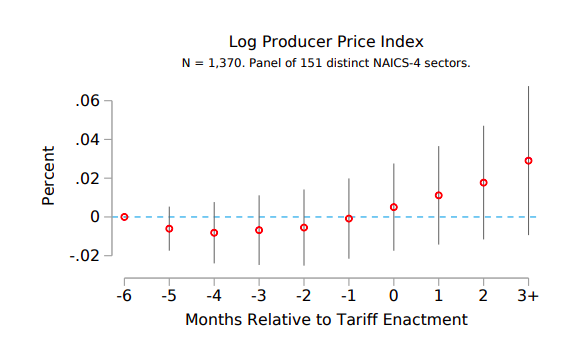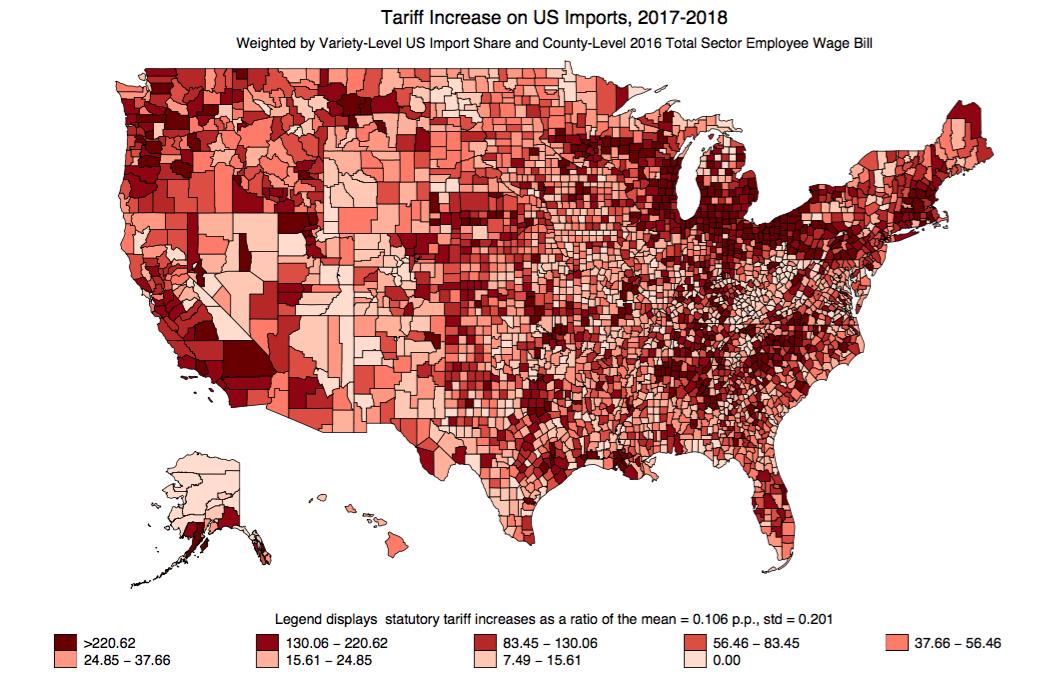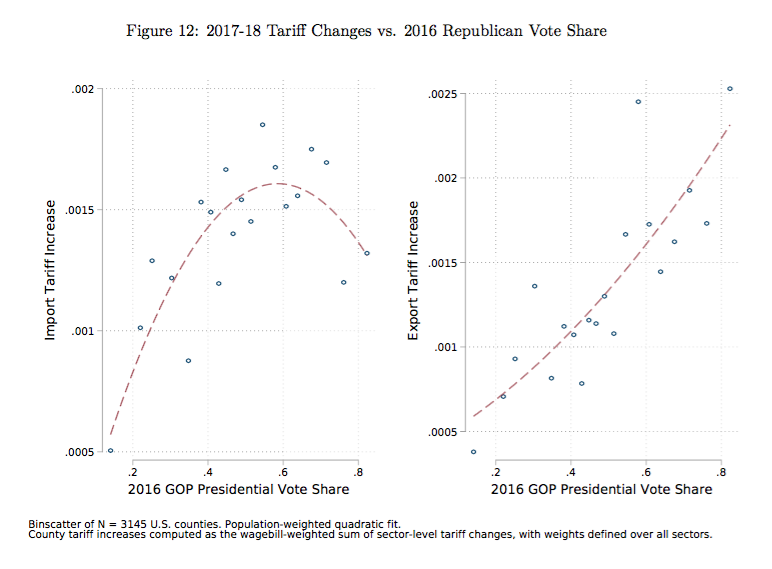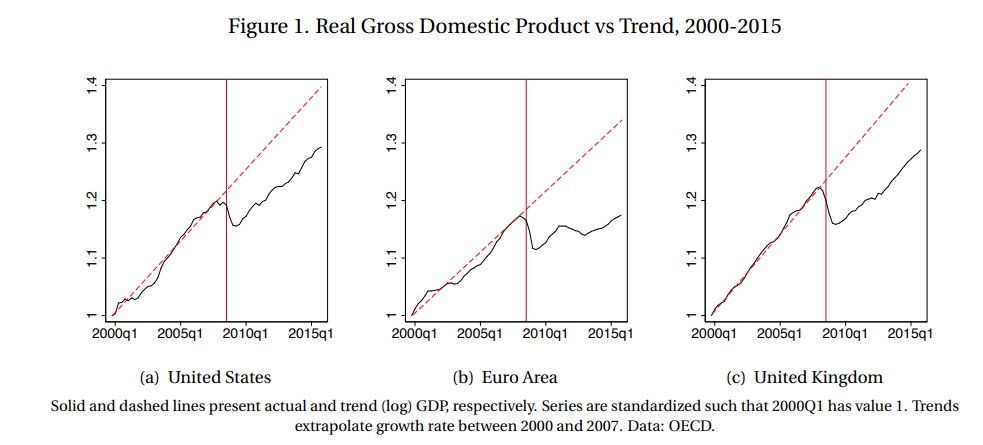Now, the US is a big country and not very dependent on trade, so it makes sense that aggregate impacts of the trade war would be small.
But this masks distributional effects in favor of producers over consumers, and unequal impacts across different regions of the US.
Moreover, the impacts of the trade war are unequally distributed across the US because different regions specialize in different sectors.
For the trade wonks, there's much more in the paper about the data, our identification strategy, pre-trend checks, anticipatory effects, the structural estimation, mechanisms, and alternative hypotheses about political economy drivers. econ.ucla.edu/pfajgelbaum/RT…
We look forward to receiving comments and improving the paper in the months ahead.












